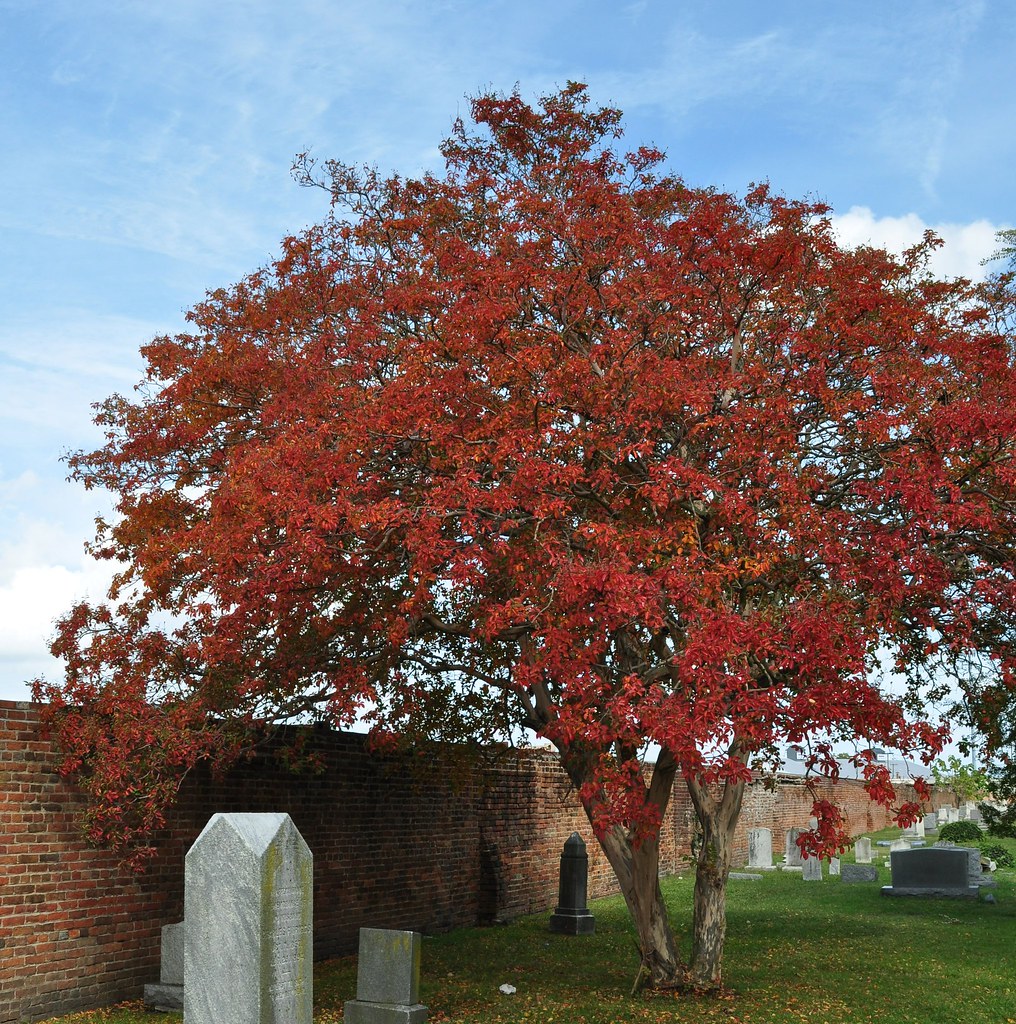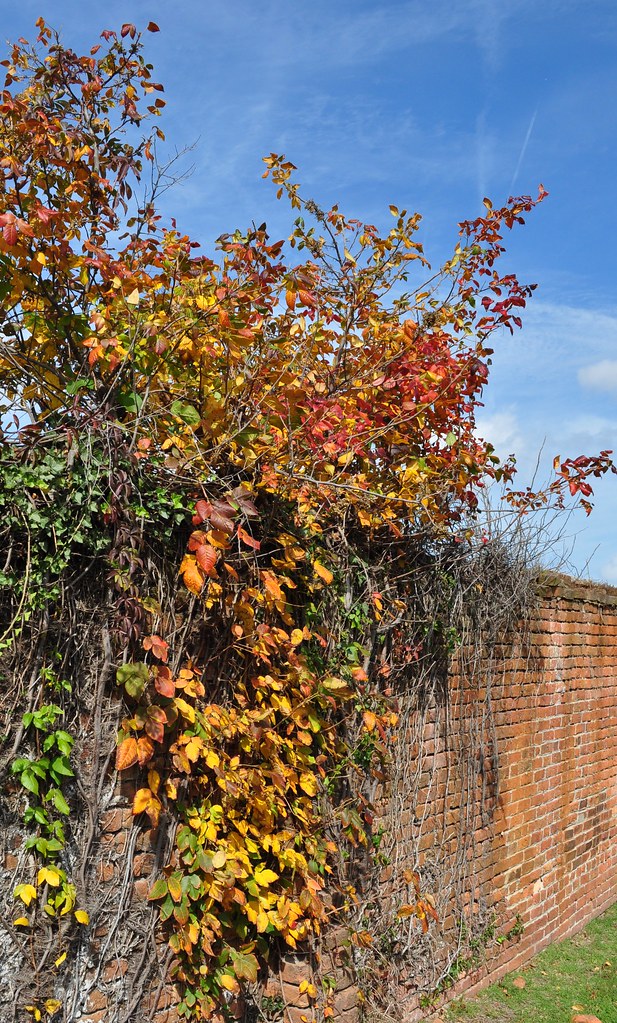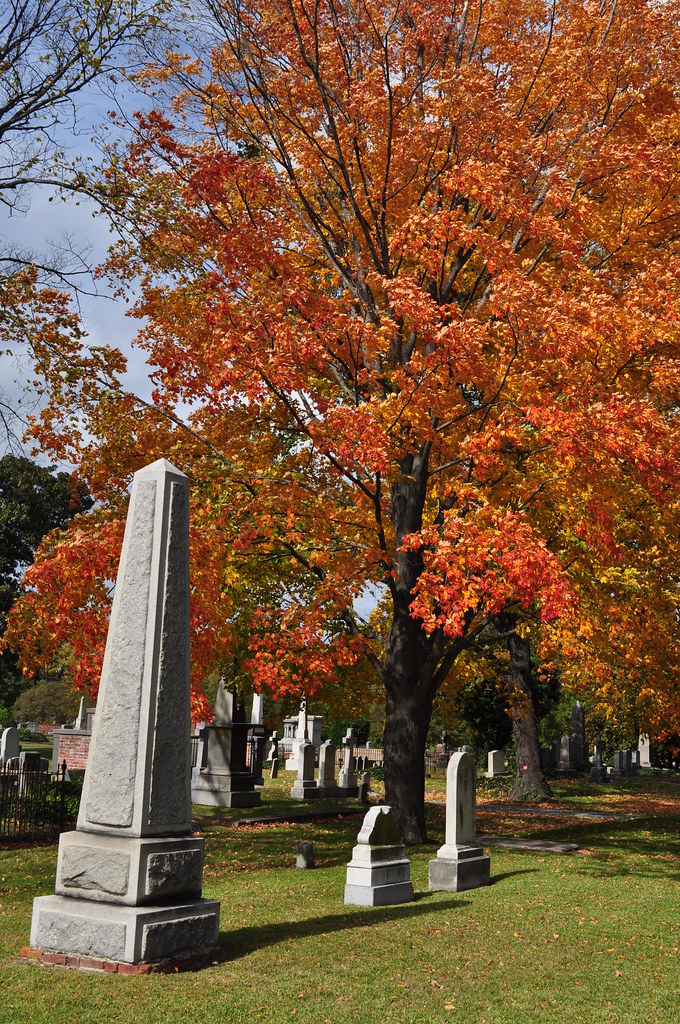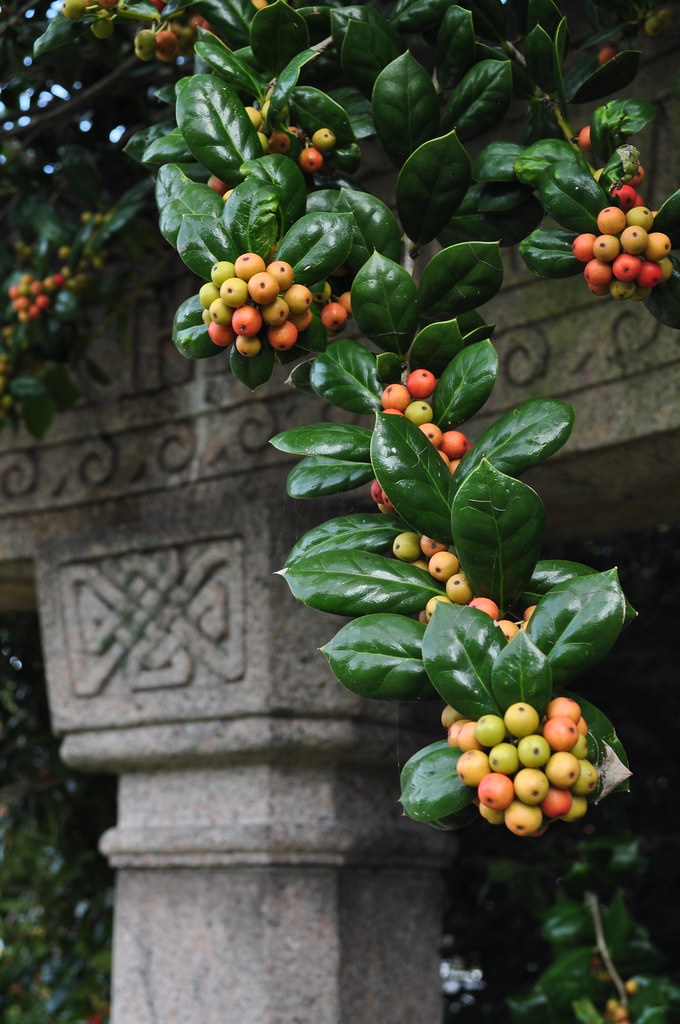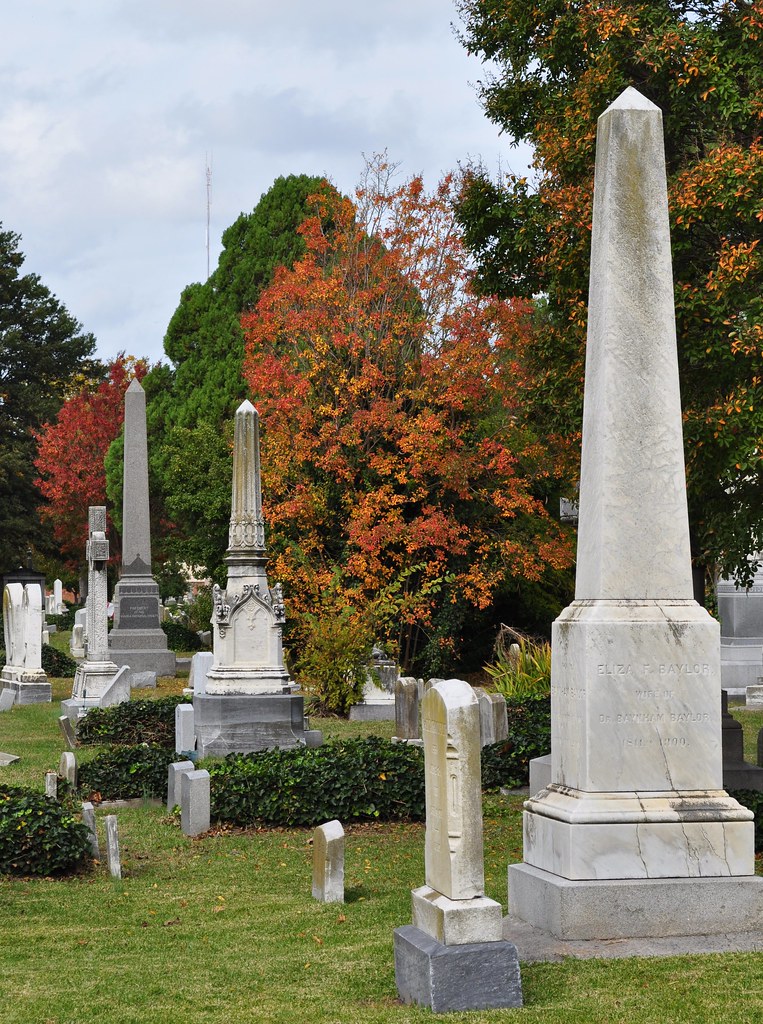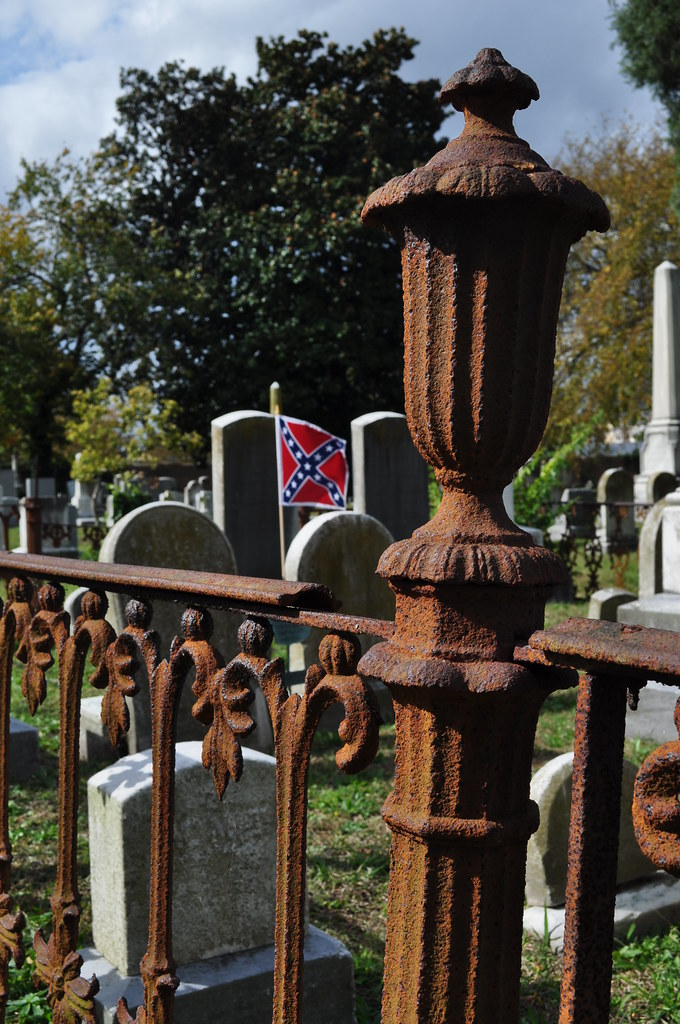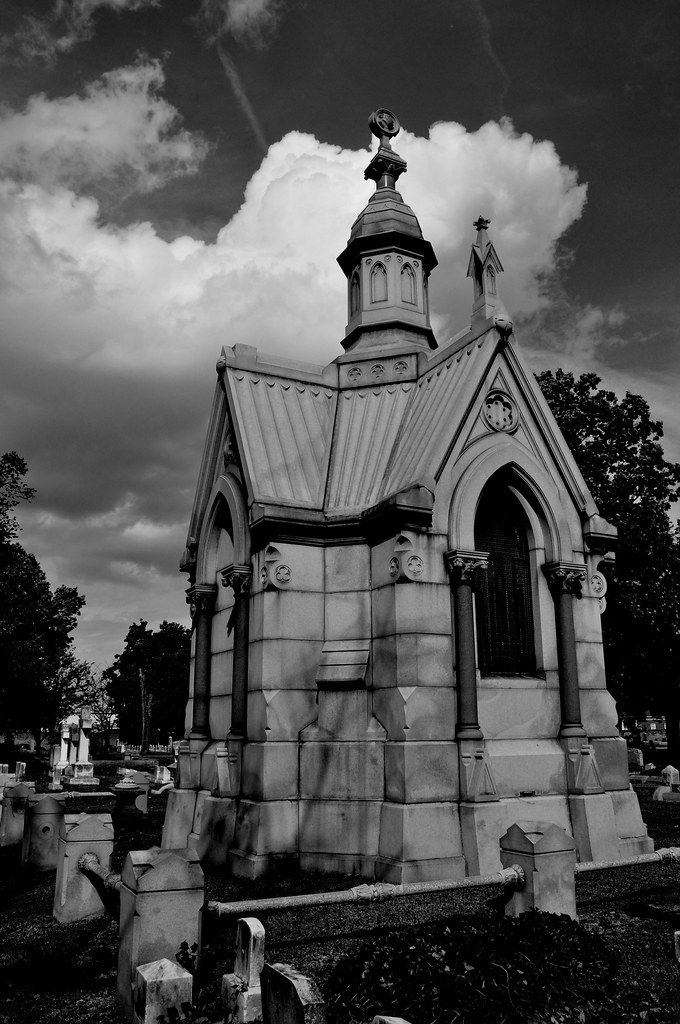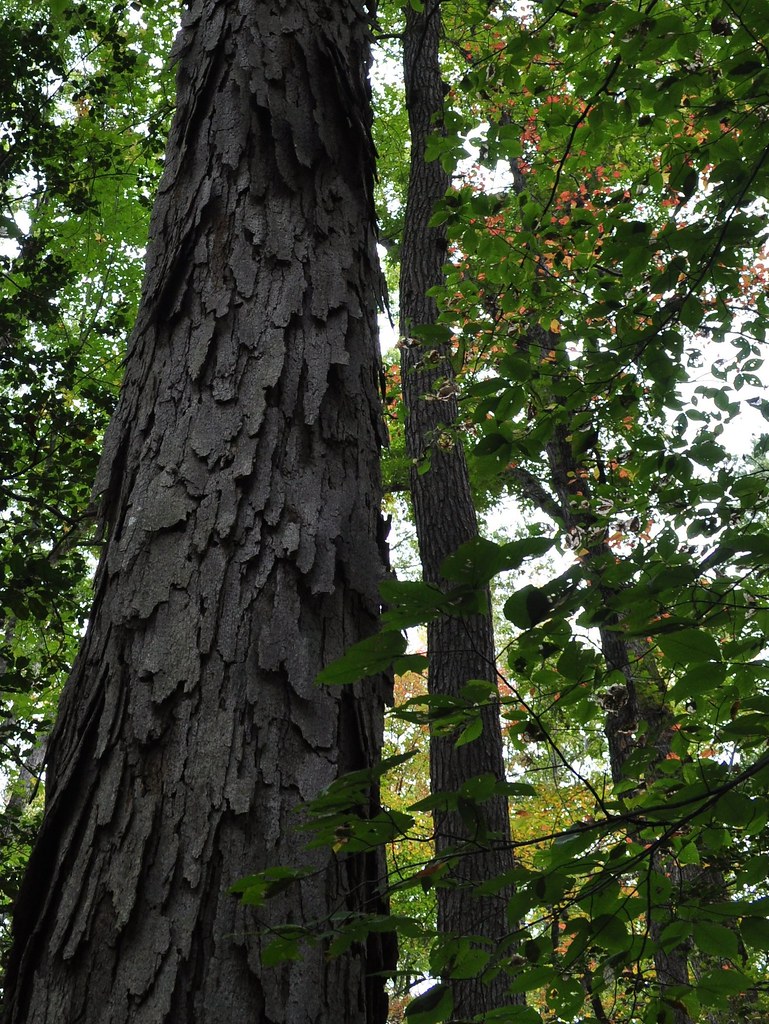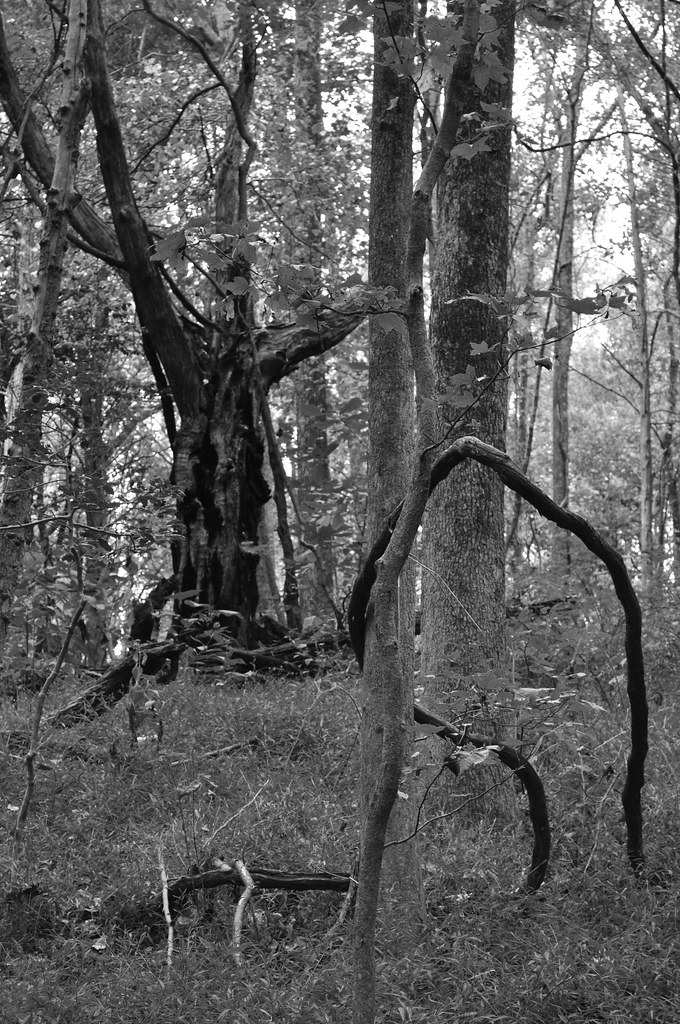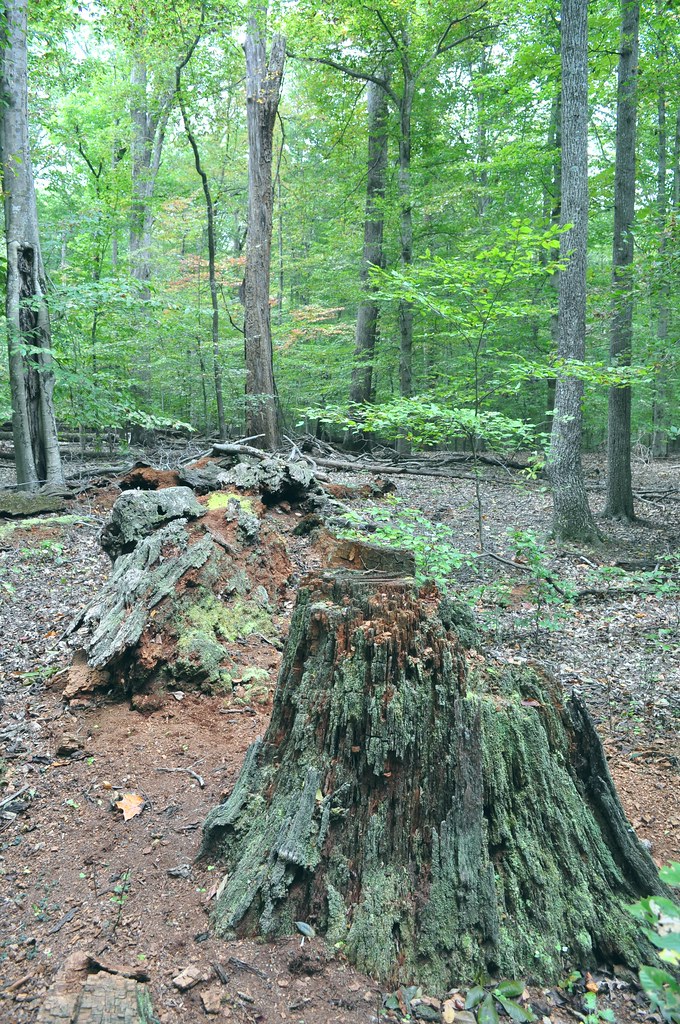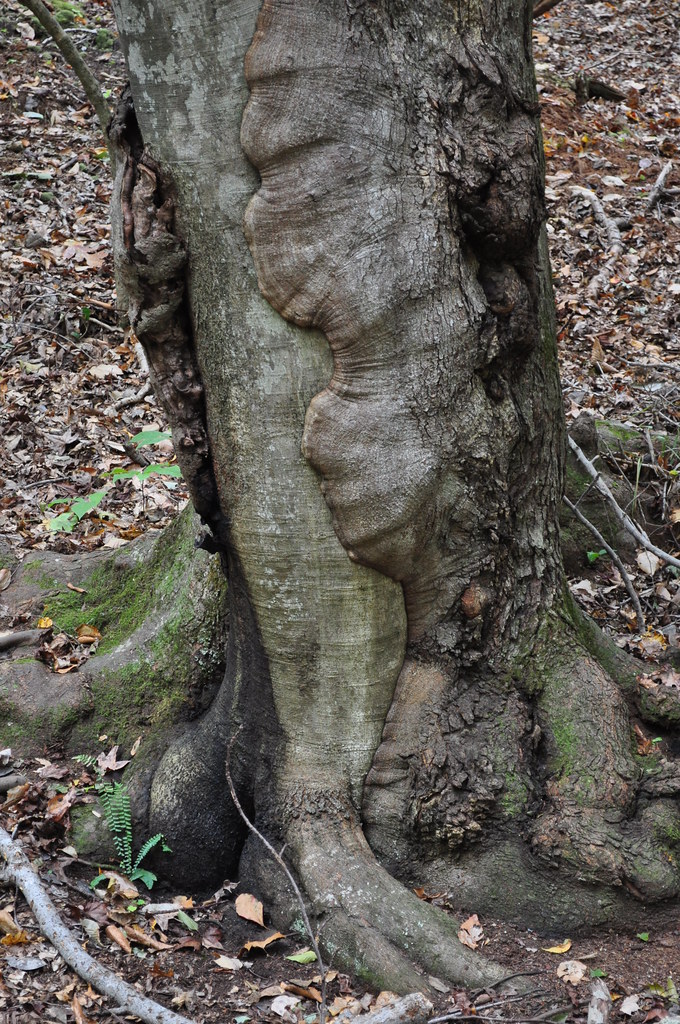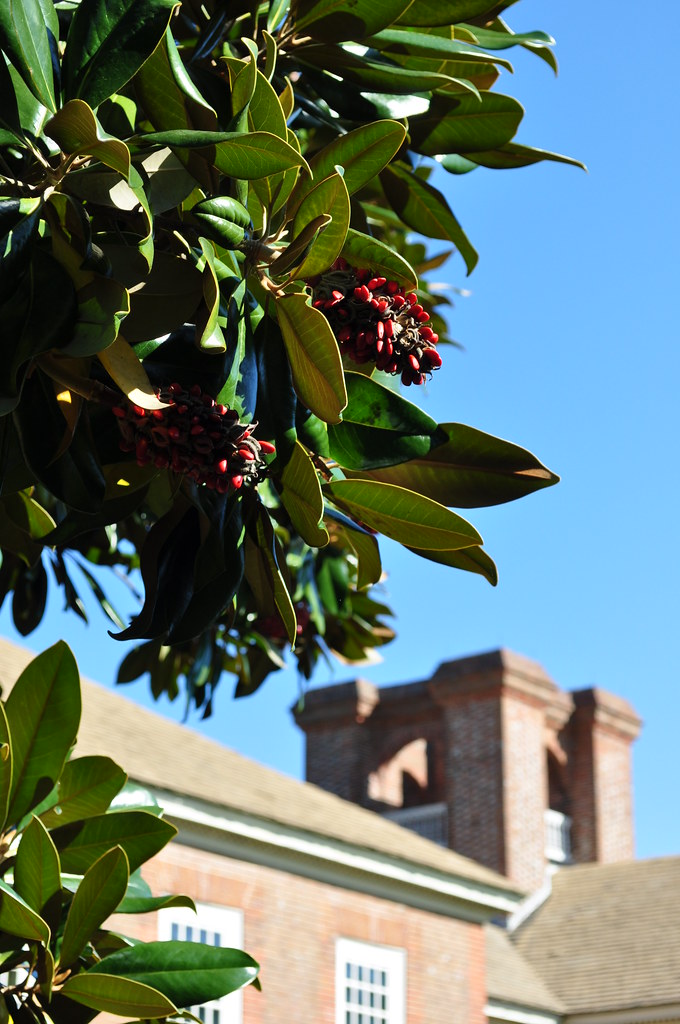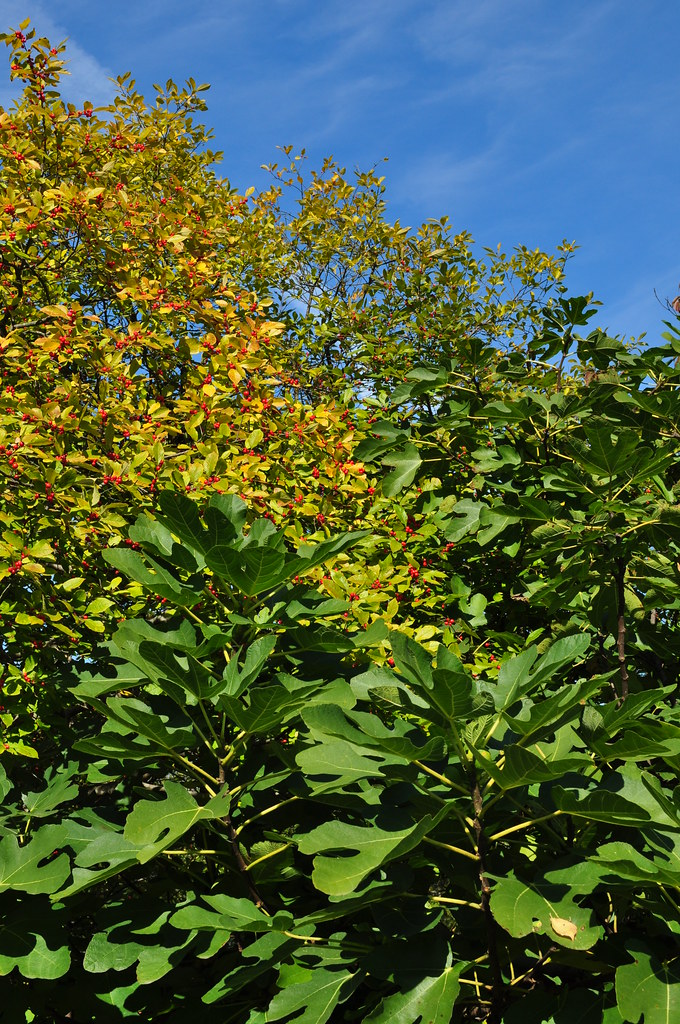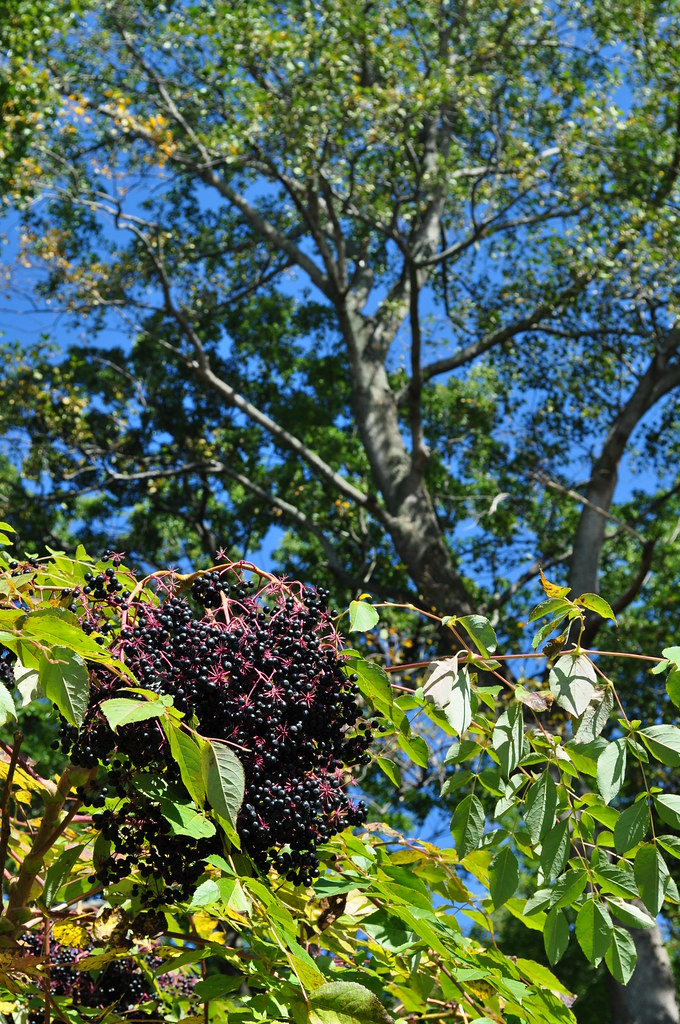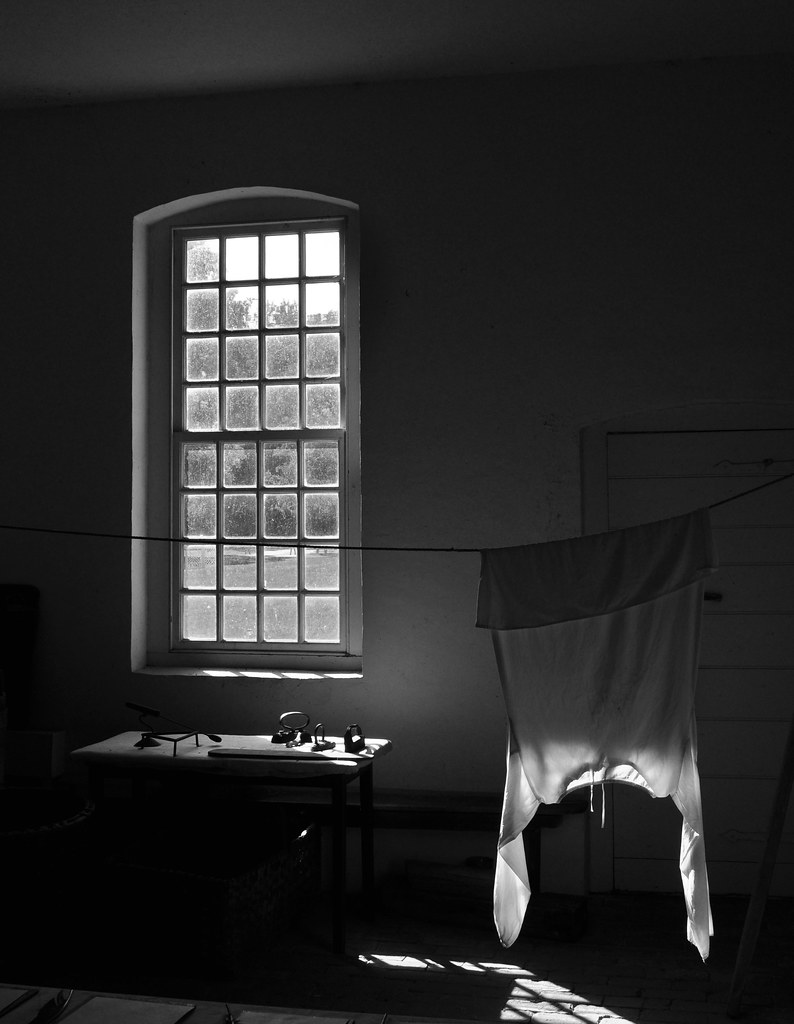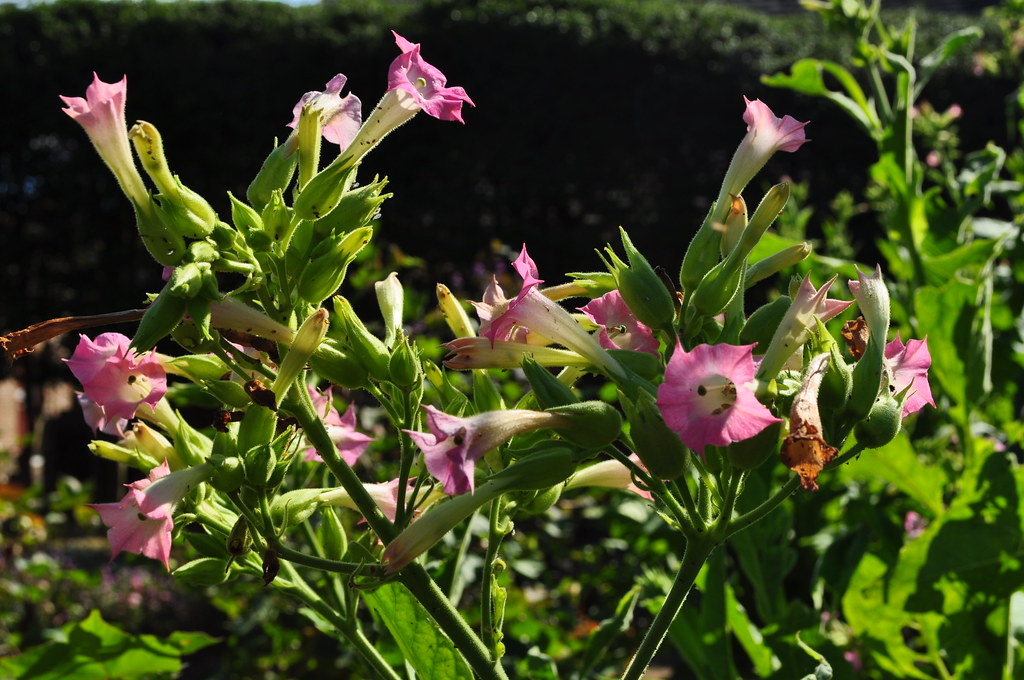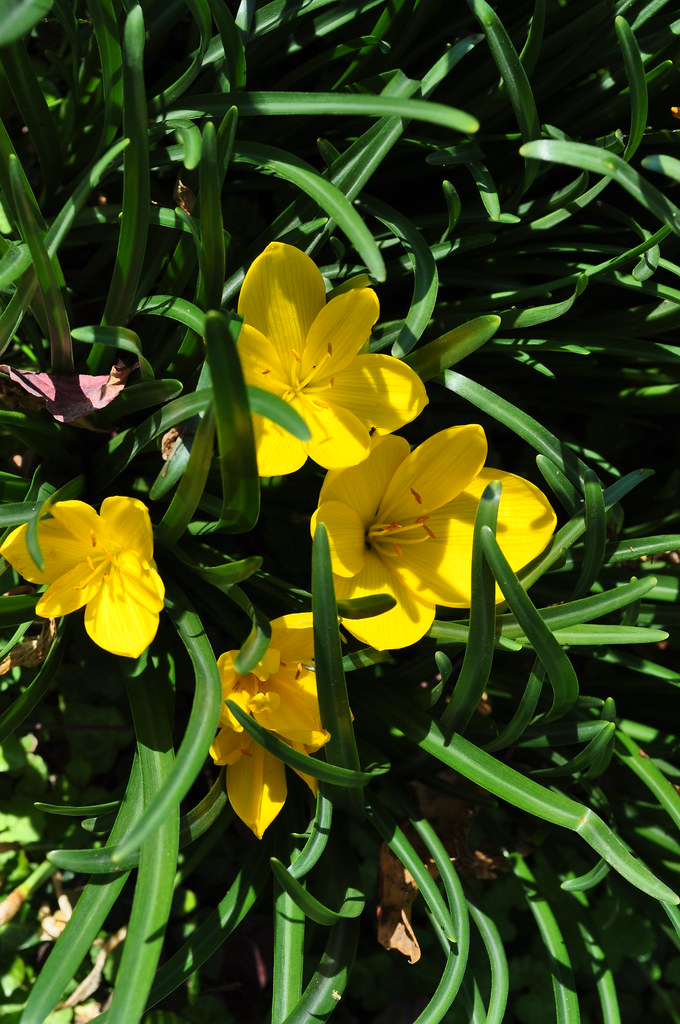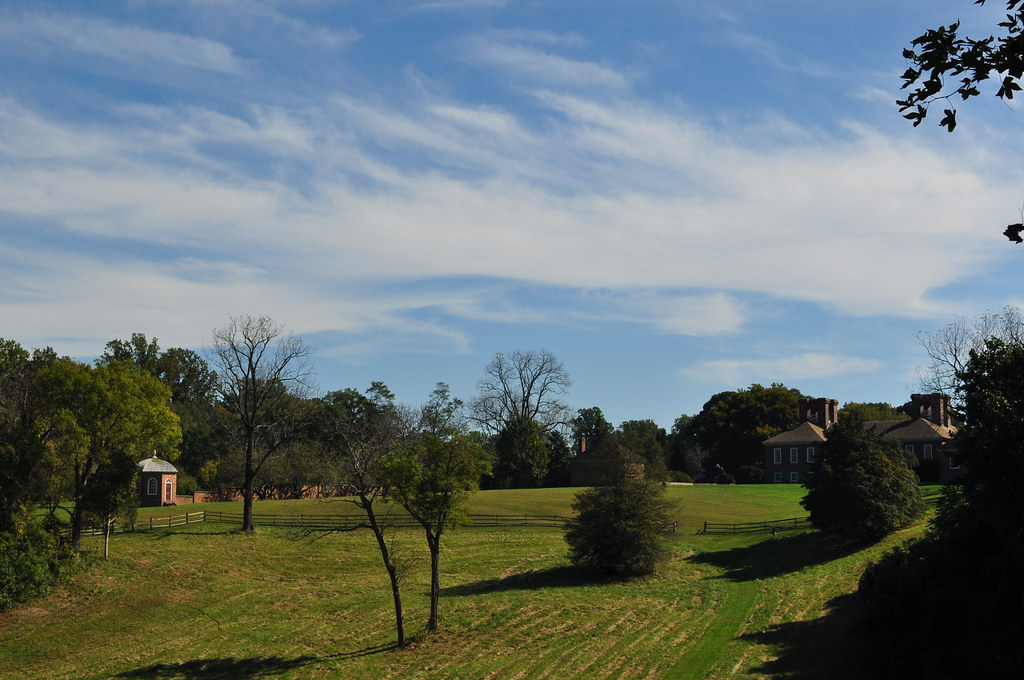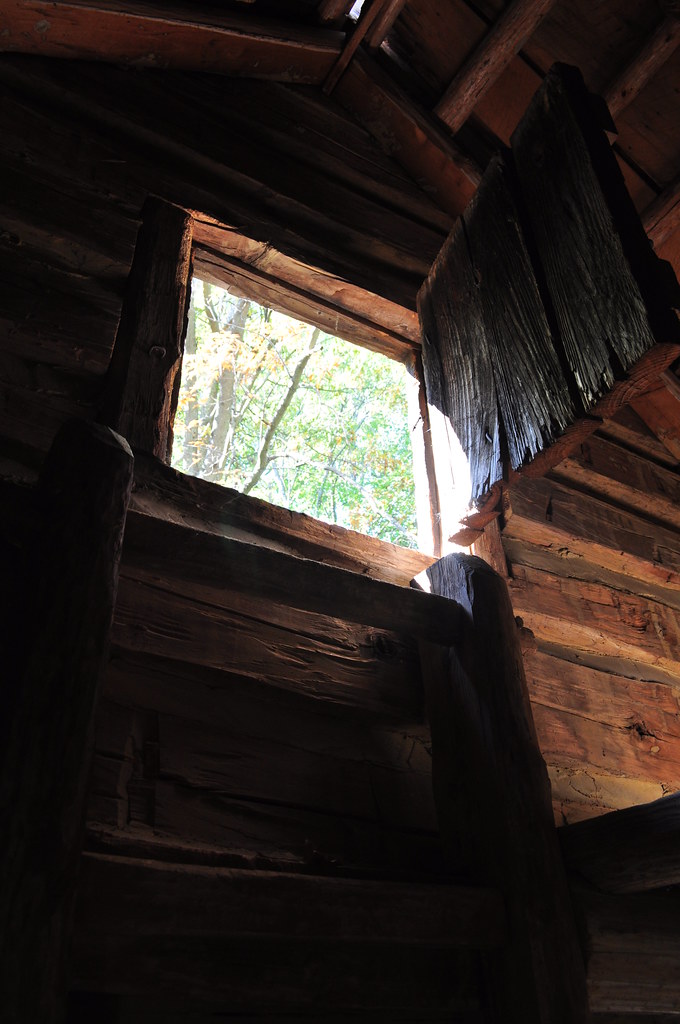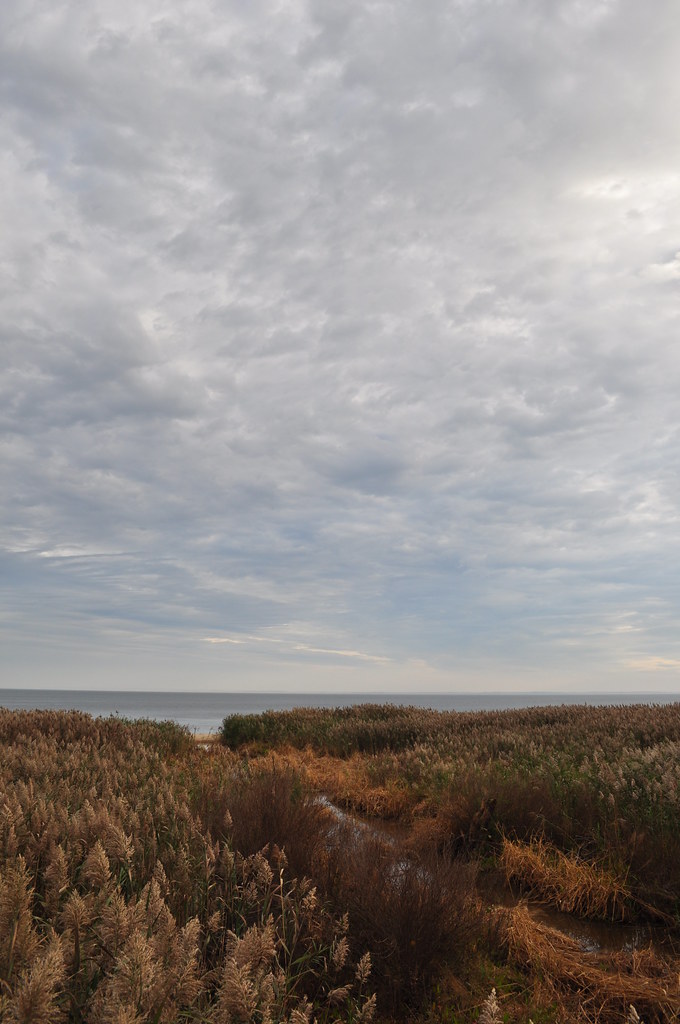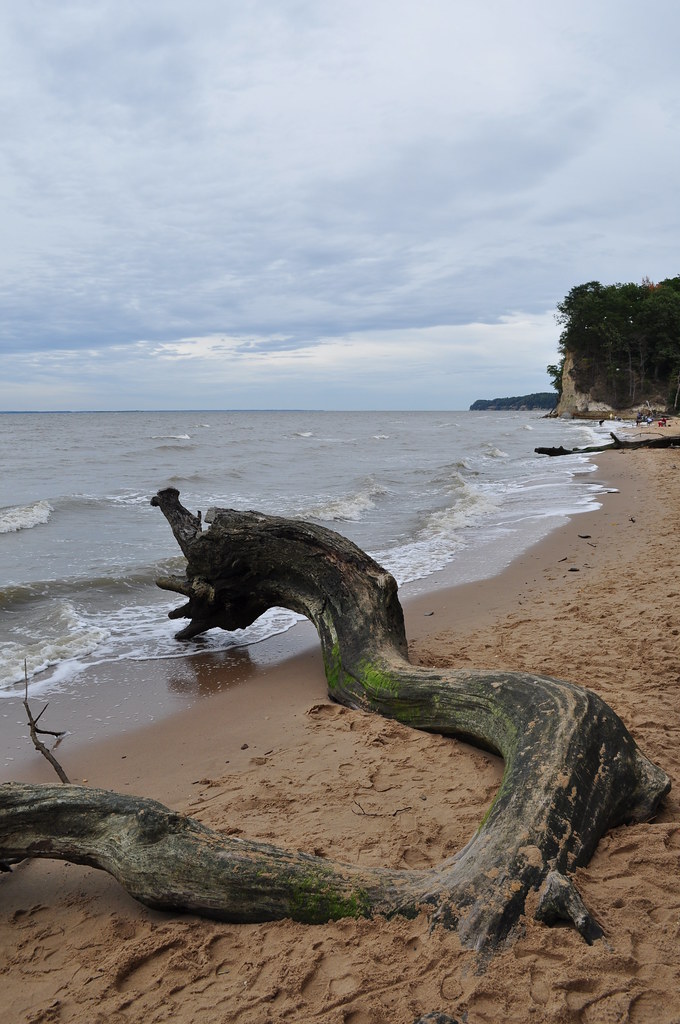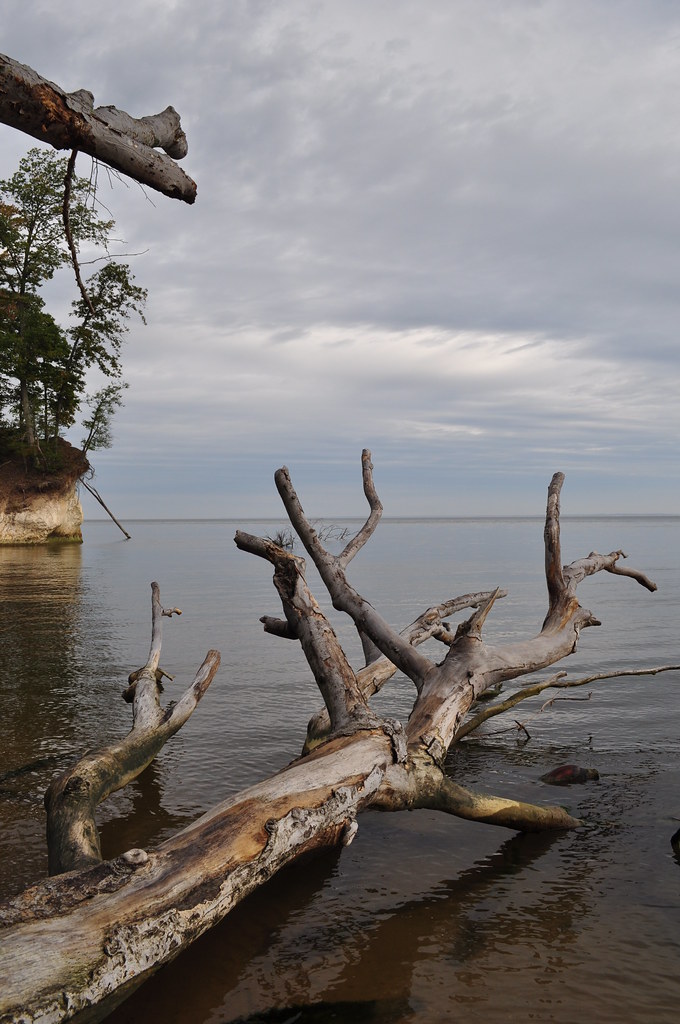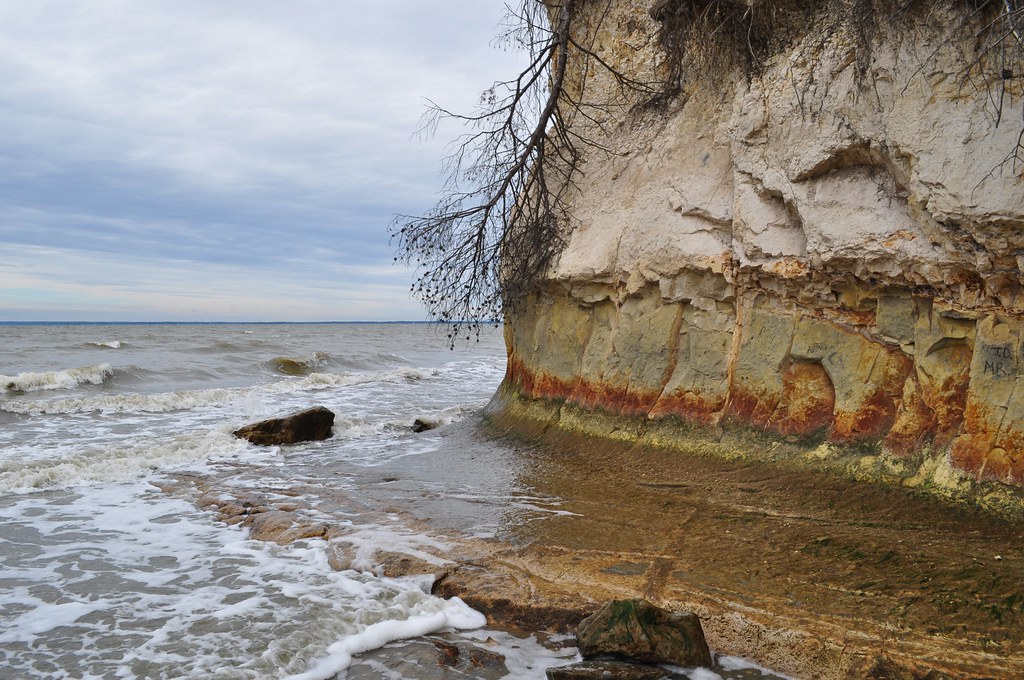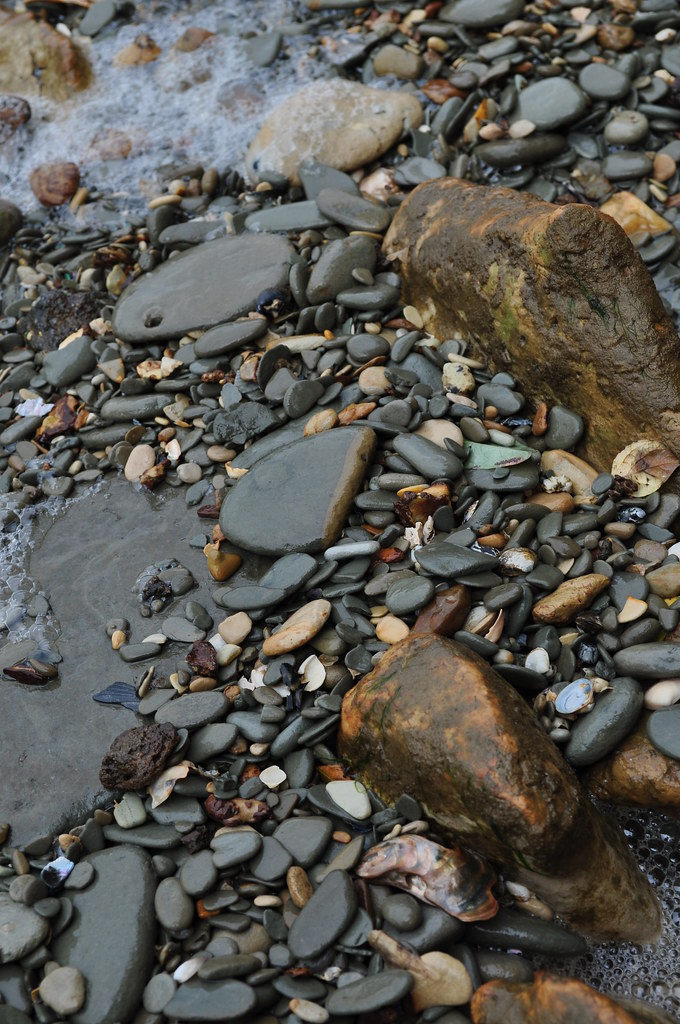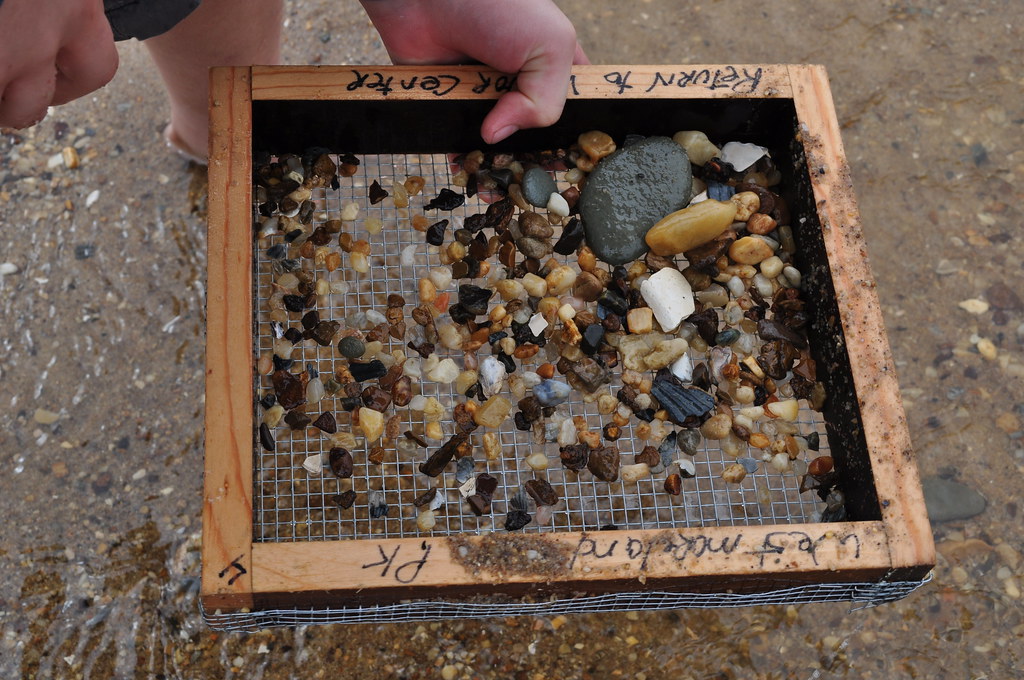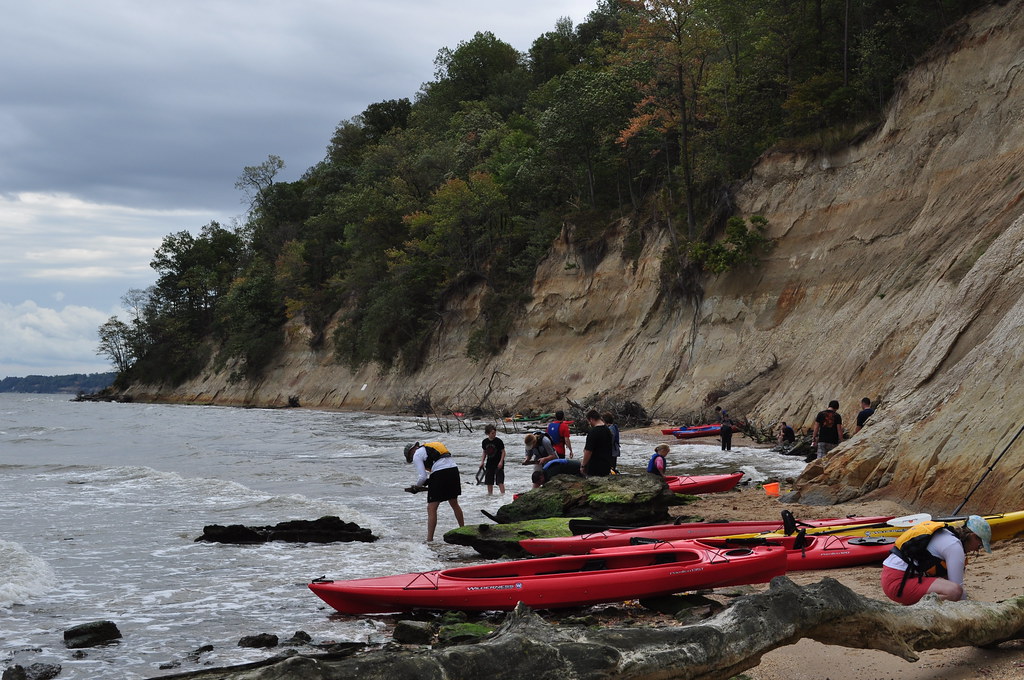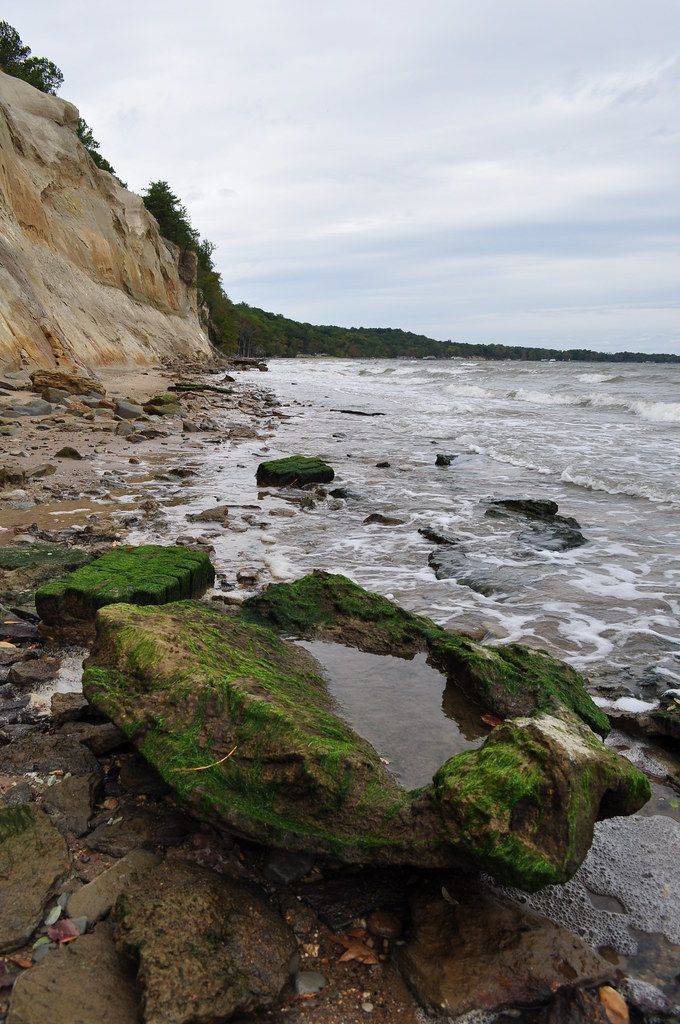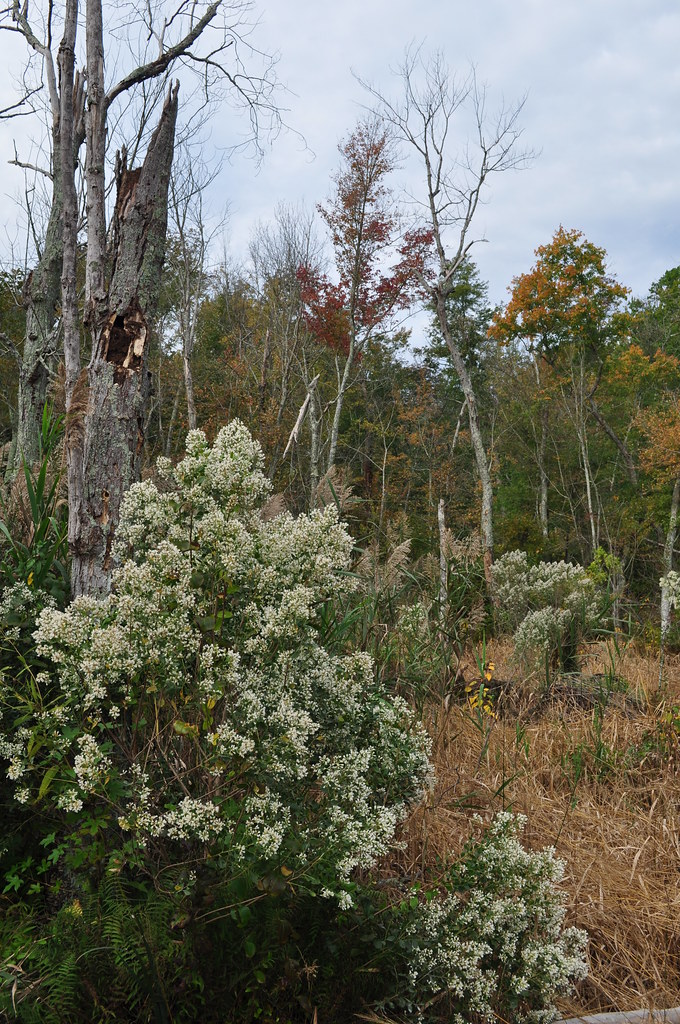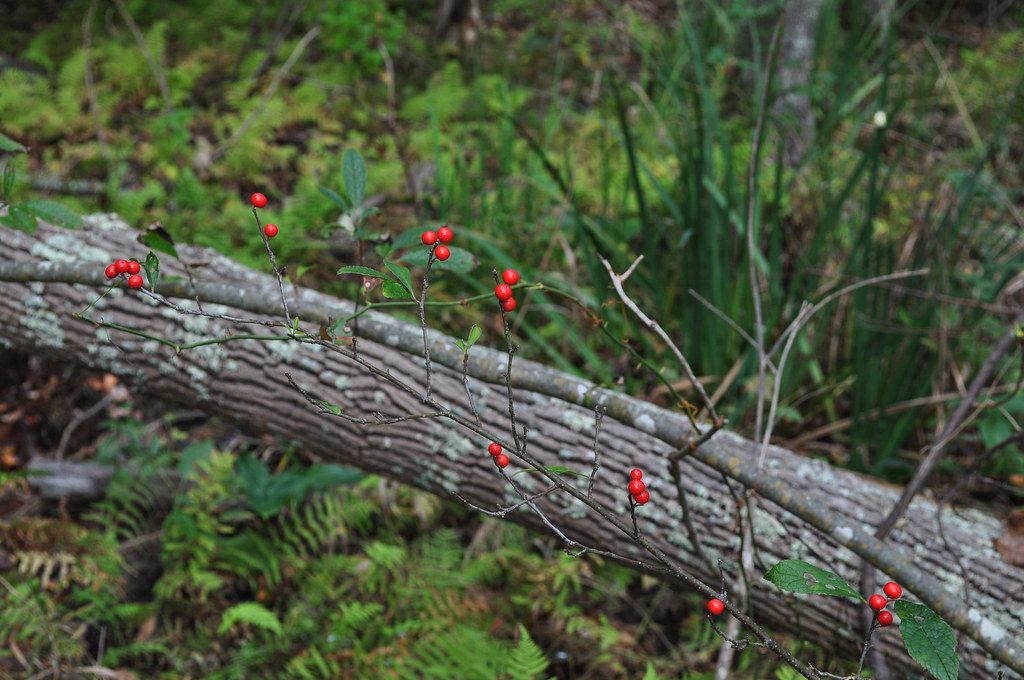October 28, 2009
Fall of the Dead
Elmwood Cemetery is not Norfolk's oldest, but it is perhaps the most elaborate, being developed in the 1850's and growing during the age when such places were considered destinations for quiet leisure, picnics and reflection. Just after the cemetery was opened it began filling with Yellow Fever victims, Civil War casualties and the prominent citizens of Norfolk. However, it did not fill with African Americans, Jews or Catholics - people from those demographics had to have their own places of burial. Do the dead care who is next them once they are gone? Somehow I don't think so, but even today, Norfolk's modern cemeteries are still somewhat segregated, not by decree, but by the choices the living make when buying plots. No matter the era or location, cemeteries are places created for and by the living, not the dead.
Happy Halloween!
October 23, 2009
Caledon Natural Area - Potomac River Trip Pt. III
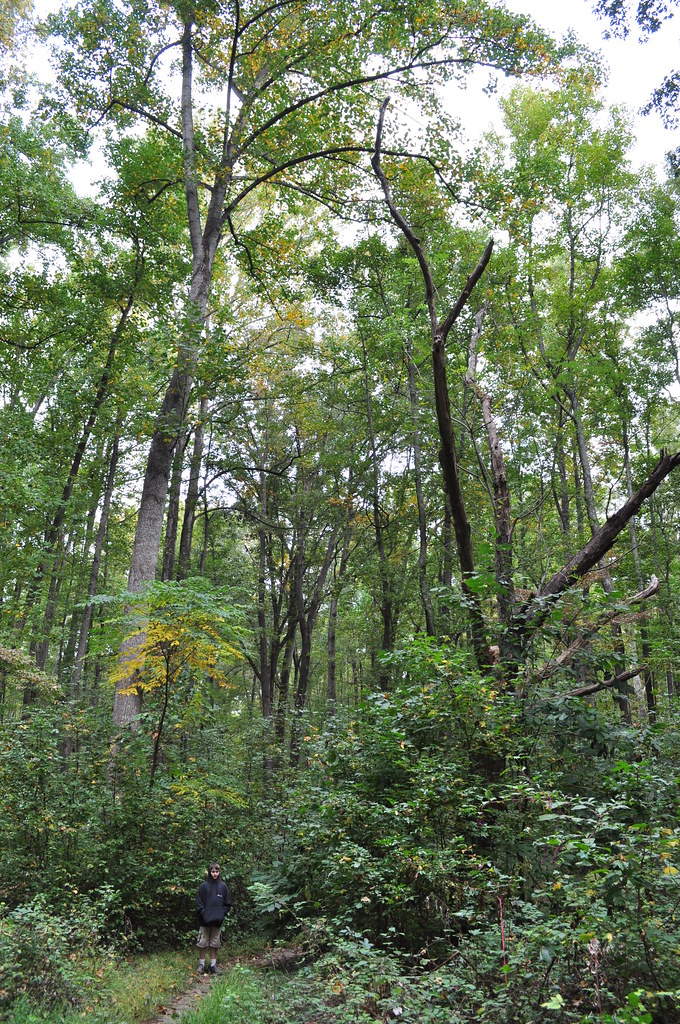
As much as I think the Eagle is a magnificent bird, I came to see the trees, besides we had already spotted half a dozen flying over Westmoreland. The forest at Caledon is primarily made up of different Oaks (Quercus sp.), Red Maple (Acer rubrum), Beech (Fagus grandifolia) and Dogwood (Cornus florida), but the queen of the forest is the Tulip Poplar (Liriodendron tulipifera). They are by far the tallest of the trees, and though I am not always that good at judging heights, I would guess the largest of these are close to 150' tall. They are not Redwood tall, but for this side of the continent, they are magnificent. Underneath these giants is surprisingly little undergrowth, mainly a carpet of leaves and in wetter areas ferns. Also on the floor are the broken skeletons of previous giants knocked down during storms, plus there are still a few remnants of the American Chestnut (Castanea dentata) that succumbed to Chestnut Blight during the first few decades of the last century.
Also at home on the forest floor is a plant that is listed as protected in Virginia, Lycopodium digitatum or as it is known here, Running Cedar. This plant was once a traditional Christmas decoration and was over-harvested throughout the state, hence its protected status.
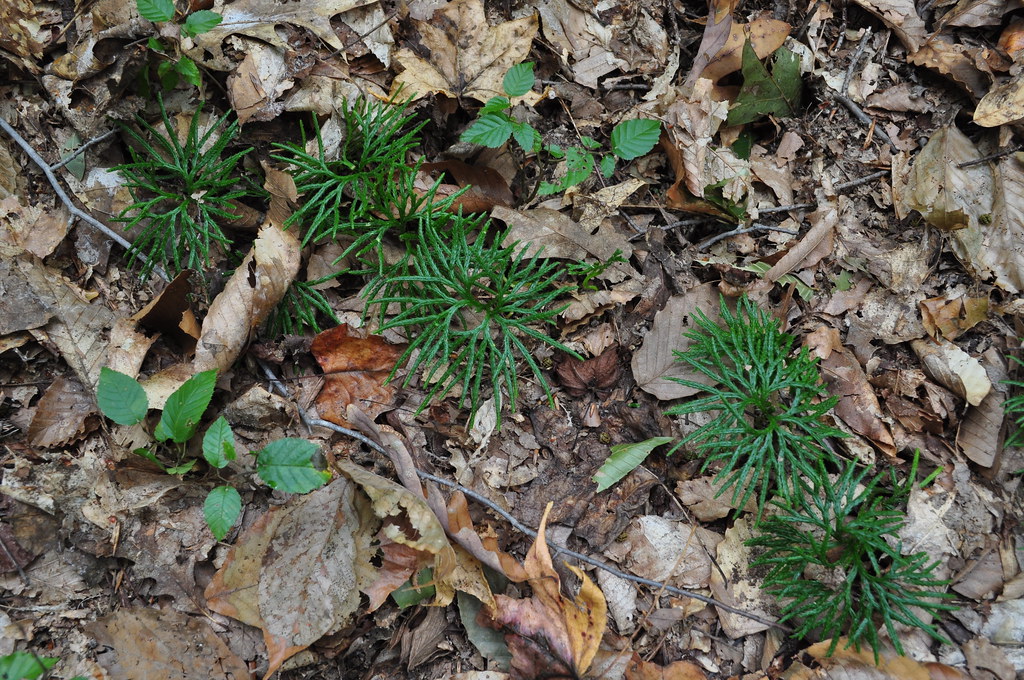
I brought along my favorite son as a reference so you can see how large and tall some of these trees are. Here he is, not sitting on a tree trunk, rather on a fallen branch from one of the large Tulip Poplars.
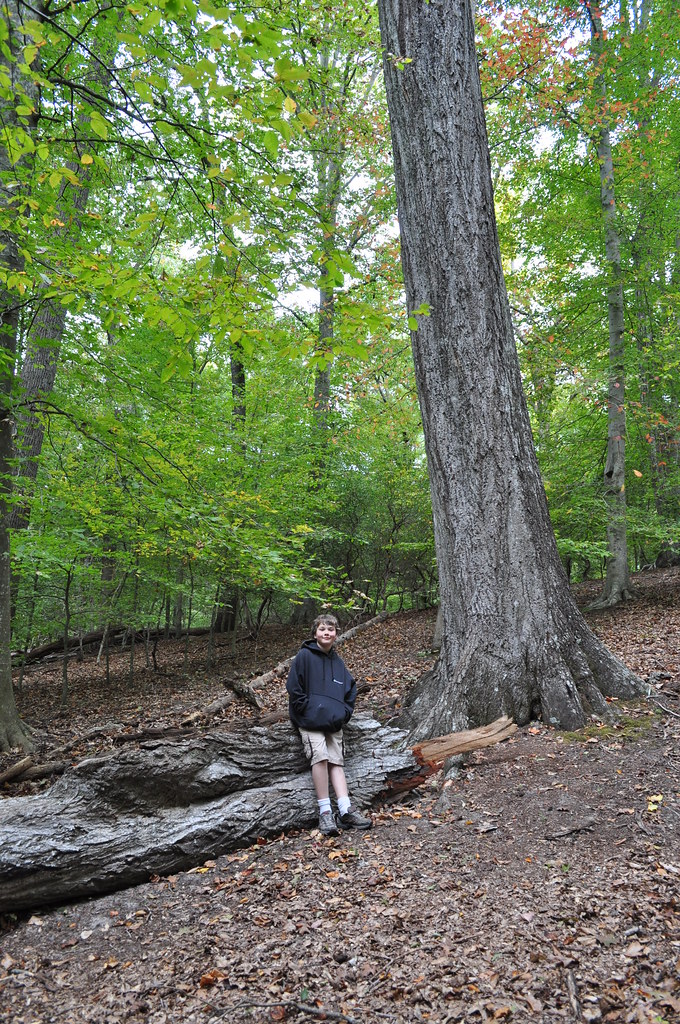
Caledon is also home some forbidden, inter-species love. Though I got the impression that the Beech (on the left) is not as committed to the relationship as the Oak (on the right) is.
I was hoping to see a little more fall color while we were there, but it was still too early. There was a lot of green with only a few hints of what was yet to be.
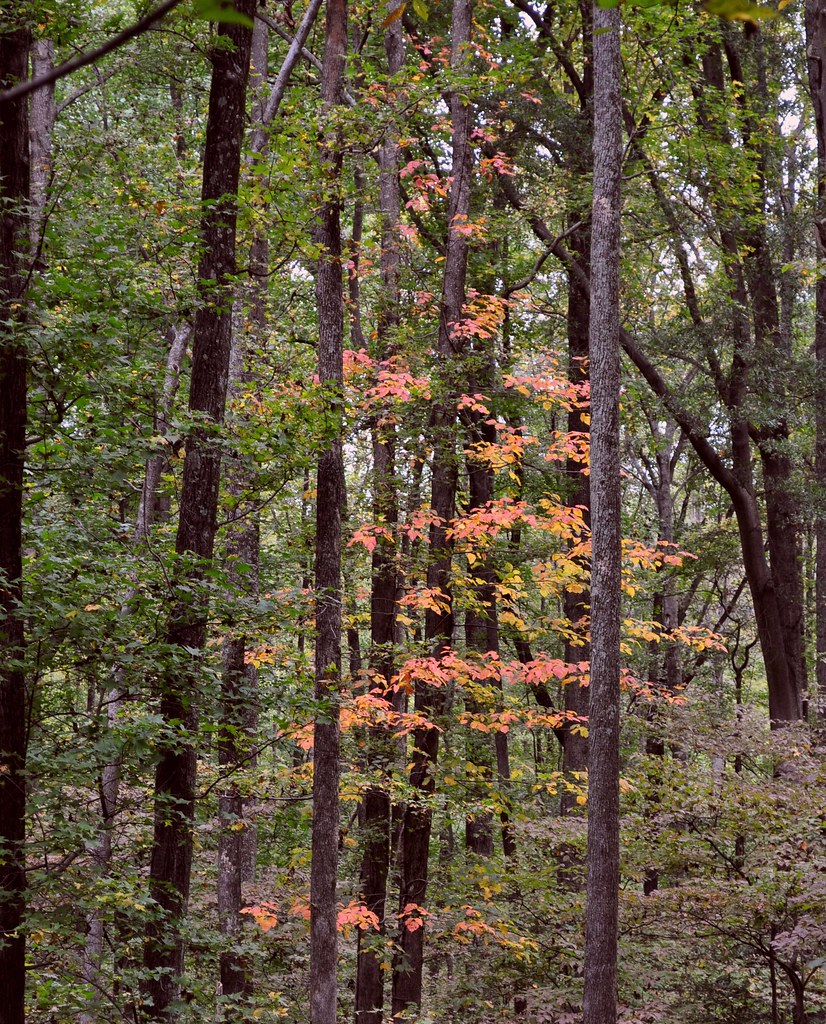
Caledon is part of the National Park Service's National Natural Landmarks Program which "recognizes and encourages the conservation of outstanding examples of our country's natural history". There are close to 600 sites already designated and if you click here you can see which sites are in which states.
Thanks to a generous gift, good decisions and wise management, Caledon looks as it may have 100 years ago, and could likely look the same way in another 100 years into the future. If I were a tree, I would be happy to call this place home.
Submitted to the 41st Festival of the Trees - "If I Were A Tree"
October 19, 2009
Stratford Hall - Potomac River Trip Pt. II
The house was built in the Georgian style and the name of its architect has been lost to the ages. As our tour guide informed us: the three most important aspects of Georgian architecture are symmetry, symmetry and symmetry. The house appears much bigger than it actually is, and when you get inside you realize the amount of family living space is not what you might expect. The floor plan is that of a giant "H" with all of the family's rooms on the upper story and with storage and service rooms in the ground level basement. The main entrance of the house is easy to find at the top of the massive steps and leads you into the great hall, which is one big room that occupies the entire middle of the house, front to back. On either side of the great hall are three to four rooms in each wing. The most prominent feature of the house are those fantastic chimney stacks, which were once linked by a roof deck where the occasional dance took place.
On either side of the house are walled gardens. The west garden is primarily planted with fruits, vegetables and herbs, both medicinal and culinary. The east garden is more formal and ornamental with plantings set among boxwood parterres (it couldn't be an old house in Virginia without lots of box). Among the gardens are four large, original out buildings, symmetrical to the main house. Here meals were cooked, laundry was done and gardening tools were stored. In one of the orchards there was small brick building called the Octagon, and it appeared to be used as a summer house.
Magnolia grandiflora
Fig (Ficus carica) and Winterberry Holly (Ilex verticillata)Hydrangea paniculata and Winterberry Holly
Devil's Walking Stick (Aralia spinosa)
The foundations and fortunes of Stratford Hall (and the whole state of Virginia for that matter) were built from this pretty plant not normally grown for its flowers - Nicotiana tabacum.
Dogwood (Cornus florida)
I saw this plant in the East Garden and thought it must be some kind of fall blooming Crocus or a regular one blooming out of season. However, when I examined the foliage, it looked like something else, and one of my co-workers later helped me ID it as Sternbergia sicula.
The house is oriented to the Potomac and a strip of the forest is kept clear so the vista remains. This shot is the rear of the house as it faces the river, the smaller building is the Octagon.
Our tour guide for the main house was extremely informed and passionate about what he did. He made a real effort to relate our lives to those lived in the 1700's. My only issue about the tour and the visitor's center is the all too brief mention of slavery, in fact the tour guide kept using the word "servant" when "slave" may have been more appropriate. I had to finally ask how many slaves it took to run the plantation. He told us at one time the plantation had 130 slaves, as well as 130 indentured servants (so I became a little less indignant). I know this historical issue is a difficult one to convey, and there are many places, like Colonial Williamsburg, that have embraced the ugly parts of our history and have worked it into their interpretations.
Well behind the main house, off on the edge of the woods is a cabin. In its small yard is a memorial to "Uncle Wes" and carved into the stone is what I am sure were well meaning words when they were written, but in 2009 they come close to sounding patronizing. Perhaps my preference for seeing the big picture was making me misread how history was interpreted here.Stratford Hall is fairly close to other attractions in Virginia and nearby Washington D.C., and if you get the opportunity you should visit. The admission is very reasonable and the private foundation that owns and runs it could use the revenue. On a beautiful clear fall Sunday, when the place should have been very busy, we had it to ourselves.
(If you are interested, there are more pictures here.)
October 16, 2009
Westmoreland State Park - Potomac River Trip Pt. I
The park has several nice trails and is heavily wooded with most of the forest in the climax stage of growth. Large maples, oaks, beeches and tulip poplars dominate the landscape. Underneath these trees the forest floor is relatively clear, but you can see American holly, ferns and mountain laurel - lots of mountain laurel, I need to come back late next spring to see them bloom. Our camp site was in a less wooded area, but it was still nice and had wild grapes hanging over the tent pad.
The trail behind our camp led us through the rich forest, down nearly 200' of steep slopes to a wetland and then out to Fossil Beach and the Potomac. You can guess why it is called Fossil Beach. 15 million years ago the whole area was covered by a warm, shallow Miocene sea that was teaming with marine life, including 20 species of shark who were constantly shedding their teeth only to fall to the bottom to become covered in sediment. We spent quite a bit of time looking for fossils, especially the large teeth of the giant Megalodon shark. Unfortunately we only found some of its smaller cousin's teeth.
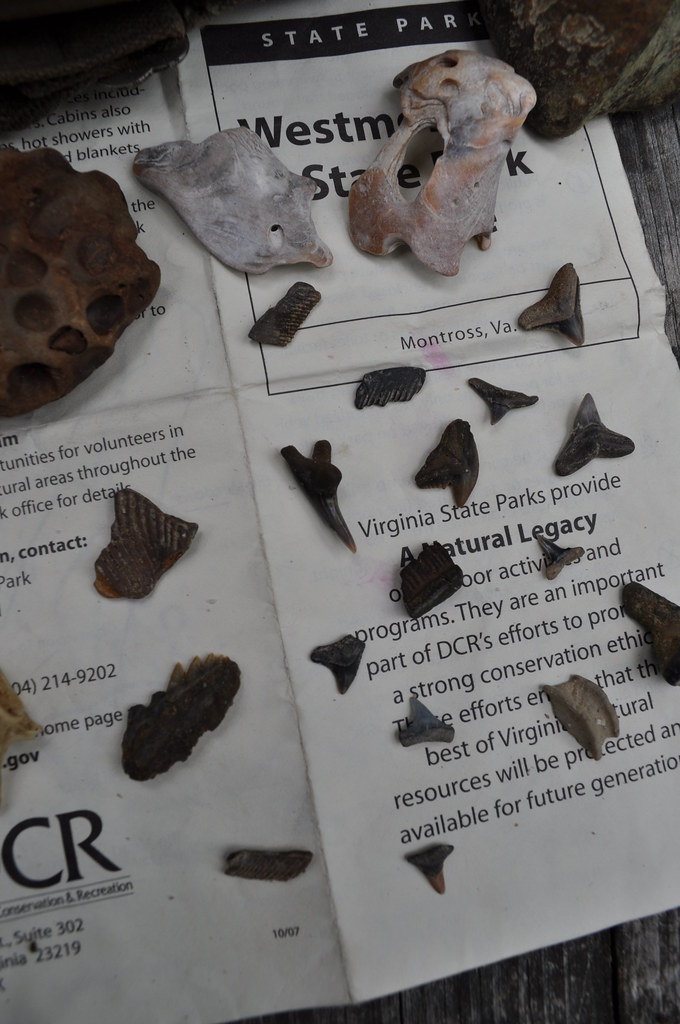
One of the more exciting parts of our trip was a guided kayak tour. Although the skies were gloomy when we put the kayaks in the water, the weather was otherwise calm. There were about 15-20 people on the trip and soon after we left the landing the winds came up and so did the waves. Water was coming into the kayak and we were getting soaked; I was afraid the water-proof bag would not protect my camera from the salt water, but it did. We were lucky compared to others, several people ended up in the water and had swim to shore. The ranger ended the trip early and had us beach the kayaks underneath Horsehead Cliffs, where you are not normally allowed to go. The cliffs are fragile and have a tendency to slough off huge hunks of earth, sandstone boulders and large trees. The weather never calmed, and we ended up having to abandon the kayaks and walk back to the landing, but this gave everyone something to remember and an opportunity to look for more fossils.

I was hoping to see some fall colors while we were there, but things had only entered the early stages and were still mostly green, but green is a color too. Nevertheless there were plenty of things to look at including Baccharis in full bloom, fruiting deciduous hollies, wild rose hips and native Viburnum.

My next post will take us to Stratford Hall, a place I have always wanted to visit. If you would like to see the rest of my Westmoreland Park photos, you can visit my Flickr page.
